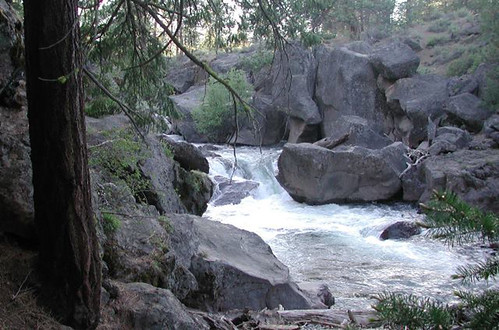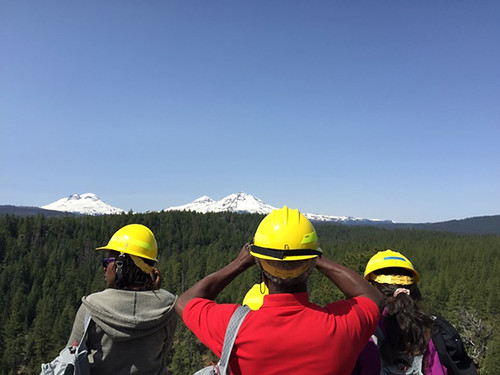
Sisters is a dreamy mountain town in Central Oregon with almost everything you might want in a scenic hideaway. With snowy peaks and expansive forests, it is an ideal location for biking, hiking, or simply contemplating wide expanses of blue sky. But for many years Sisters was missing one crucial thing - we had lost our river.
For thousands of years, Native Americans followed a winding course of icy snowmelt into the high country of the Three Sisters Mountains that gave the town its name. The river was full of waterfalls and wild steelhead salmon. It provided more than half of the steelhead spawning habitat in the Upper Deschutes River Basin. The river had several names, but in 1855, when Pacific Railroad Survey Engineers came through looking for a railroad route to the ocean, they recorded in their journals that the river was called “Whychus”.
As homesteaders came and built our town, the river first lost its historic name. Then it lost its water to irrigation withdrawals. Finally, it lost its fish, which were blocked from returning to spawn by hydroelectric dams downstream. The river became a trickle of a creek, dry in the summer, and its wild upper reaches were forgotten.
Jess Edgington, the son of local homesteaders, said it this way, “The town people never used to care much about what went on with extra things around here. Their interest was in logging and their jobs. They liked to fish and hunt, I know that. But as far as taking any care of Whychus Creek or anything like that, that was just somebody else’s concern.”
But some people did care, and in 1988 the upper reaches of Whychus were protected as a Wild and Scenic River. Spurred by the re-establishment of fish passage at the Pelton-Round Butte Dam, there has been a concerted effort from dozens of agencies and non-profits to restore stream flows and habitat, purchase private land for conservation and remove obstacles for returning steelhead. The creek had its historic name restored in 2005. In 2009, the National Forest Foundation designated the area as a “Treasured Landscape,” and together with the Forest Service began a 1.7 million dollar campaign to promote accelerated restoration and stewardship, helping people convert their passion for forests into meaningful and sustainable conservation actions. In 2010, the Deschutes National Forest finished a Wild and Scenic River Management Plan and went to work with our partners on removing weeds, closing unneeded roads and reviving dried floodplains.
Before he died, Jess observed, “I think there’s a vast amount of caring now. People here see the potential of a stream going through town - a steady stream, not an off and on one.”
Watershed restoration takes a village. Today, the Whychus watershed is coming back to life and we are rediscovering a river we had lost. Remarkably, in less than 20 years, it has turned around.
Steelhead are returning from the sea, irrigation water is being conserved, and 25 cubic feet per second of protected water now flows on the driest days, meeting the State’s minimum instream flow target. Over 90 percent of the Wild and Scenic River plan priorities are in progress or have been accomplished after 5 years.
In this great restoration experiment, we are working across boundaries to give our creek a second change to be a river; a river full of water in the summer, with a floodplain, willow thickets and wildflowers, where we can watch the steelhead jumping in the waterfalls. After many decades, recovery of the lost river Whychus is becoming a reality.
This post is part of a series featuring the Forest Service’s work on restoration across the country.

